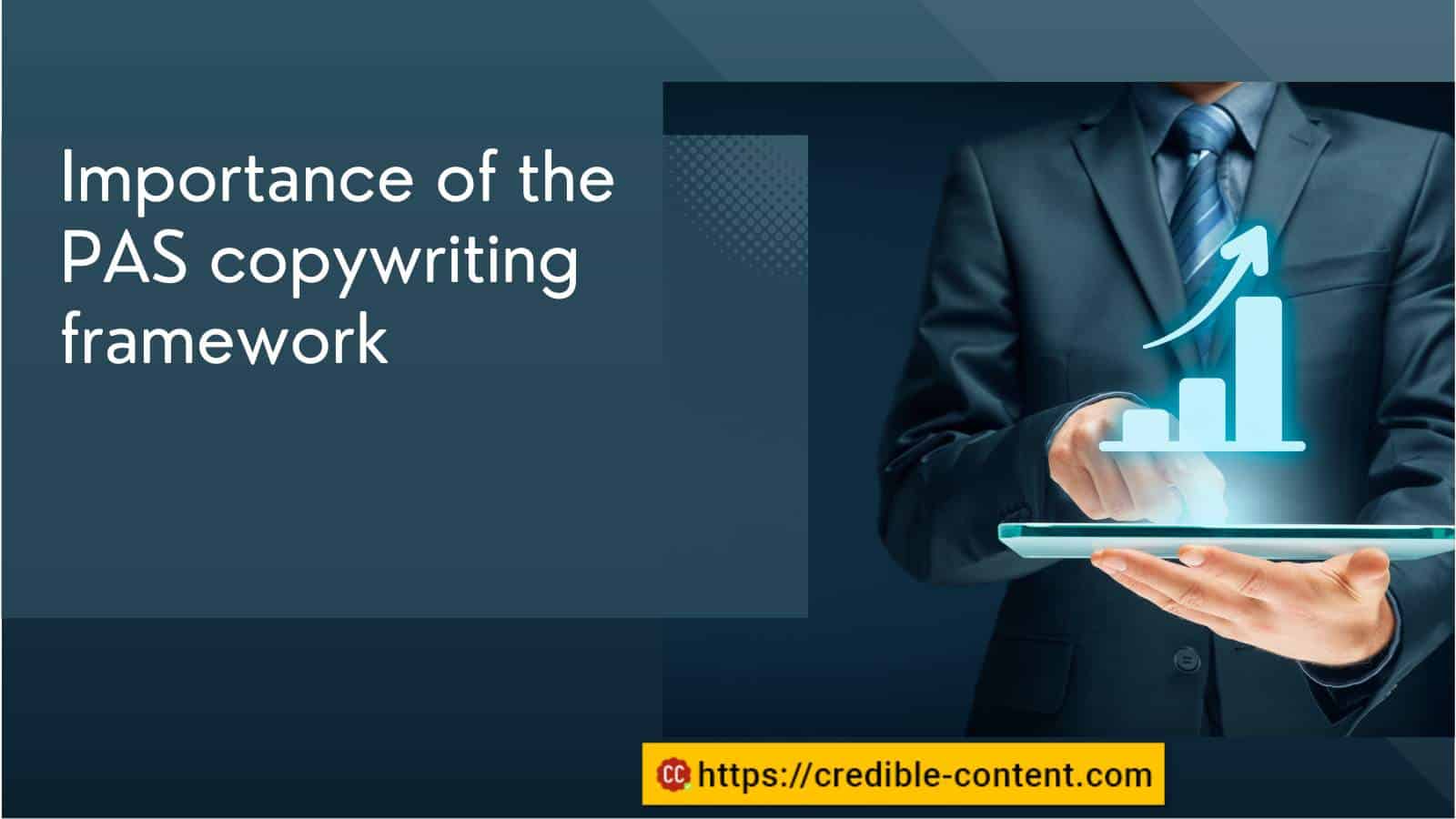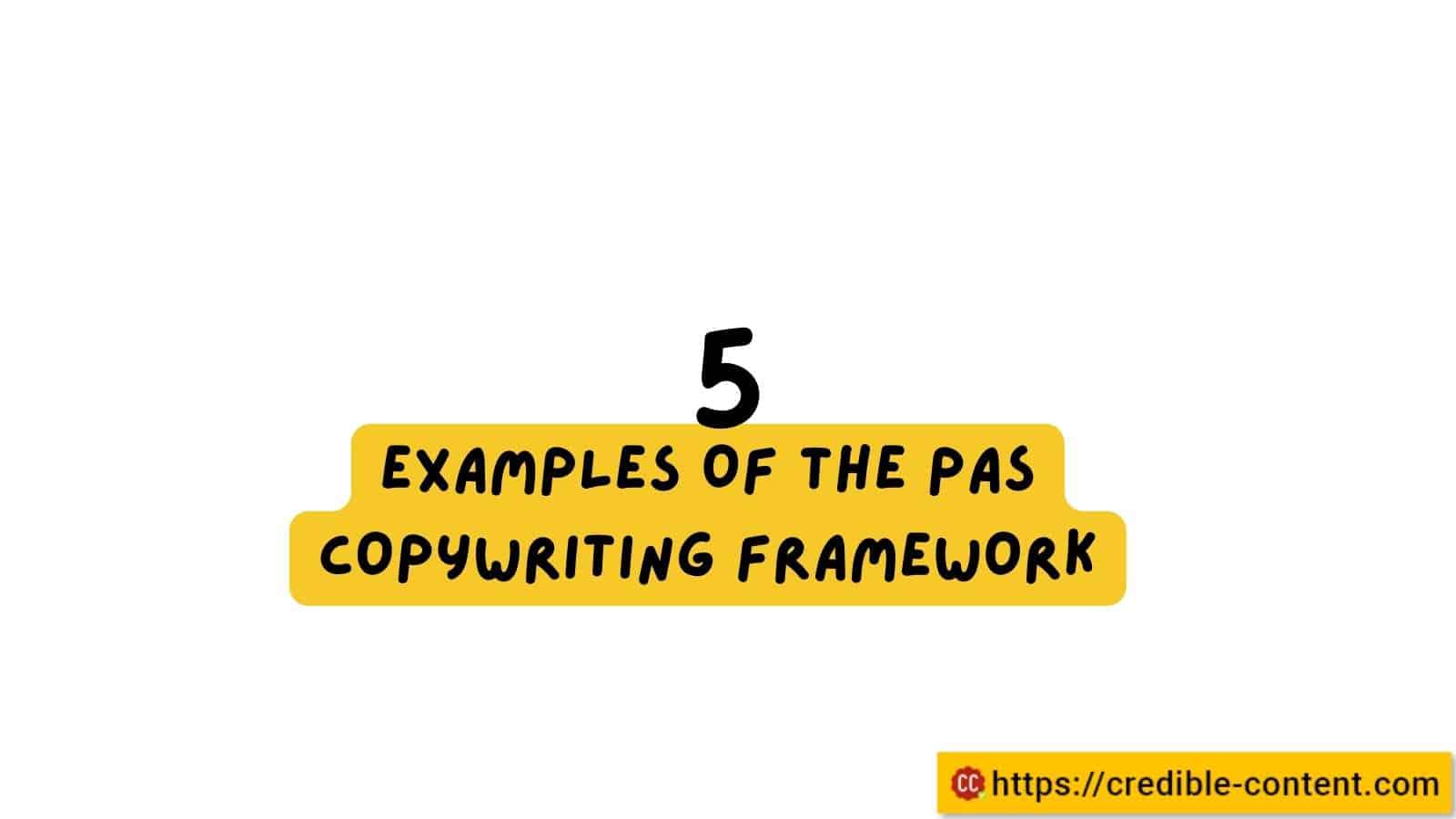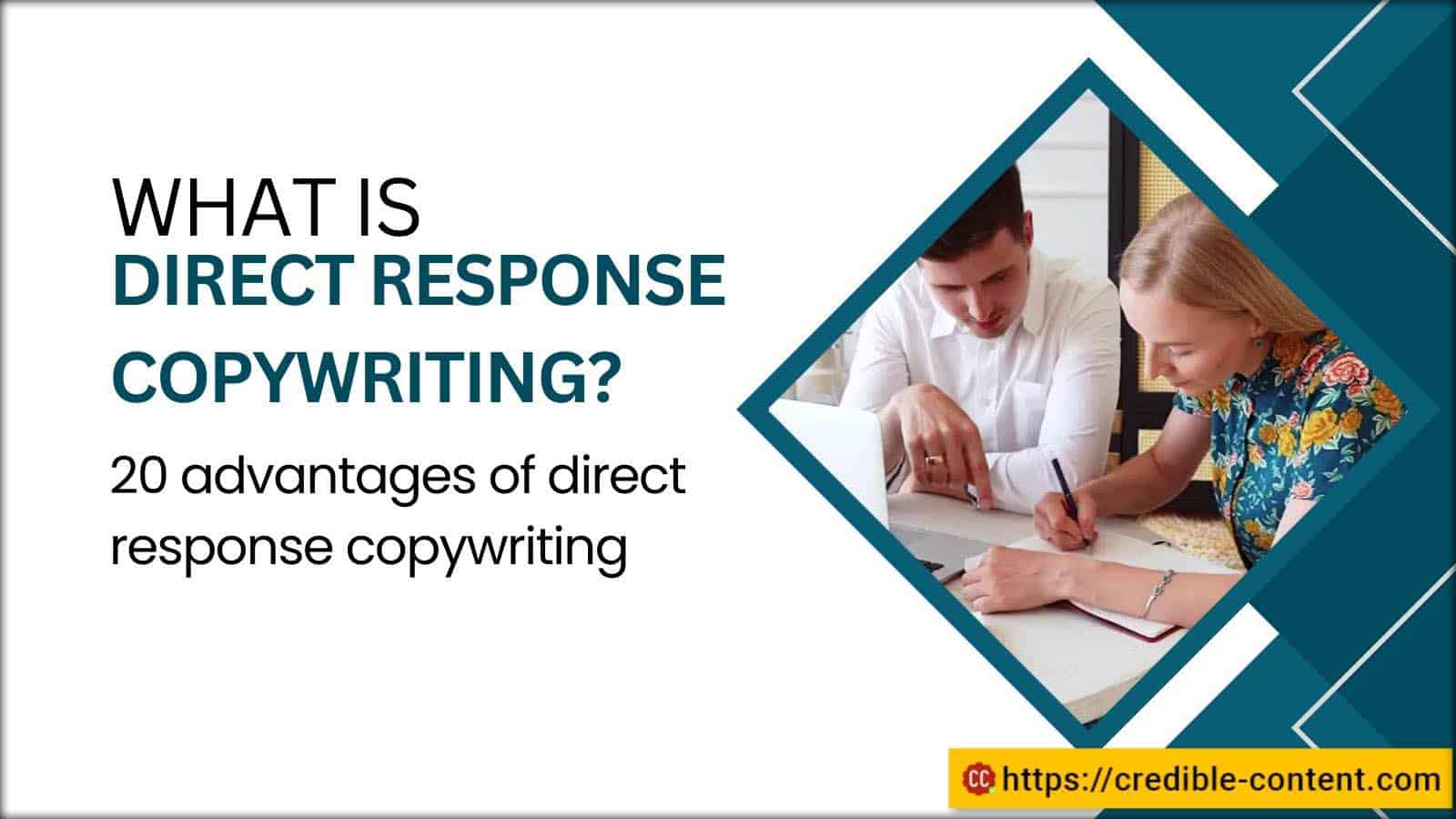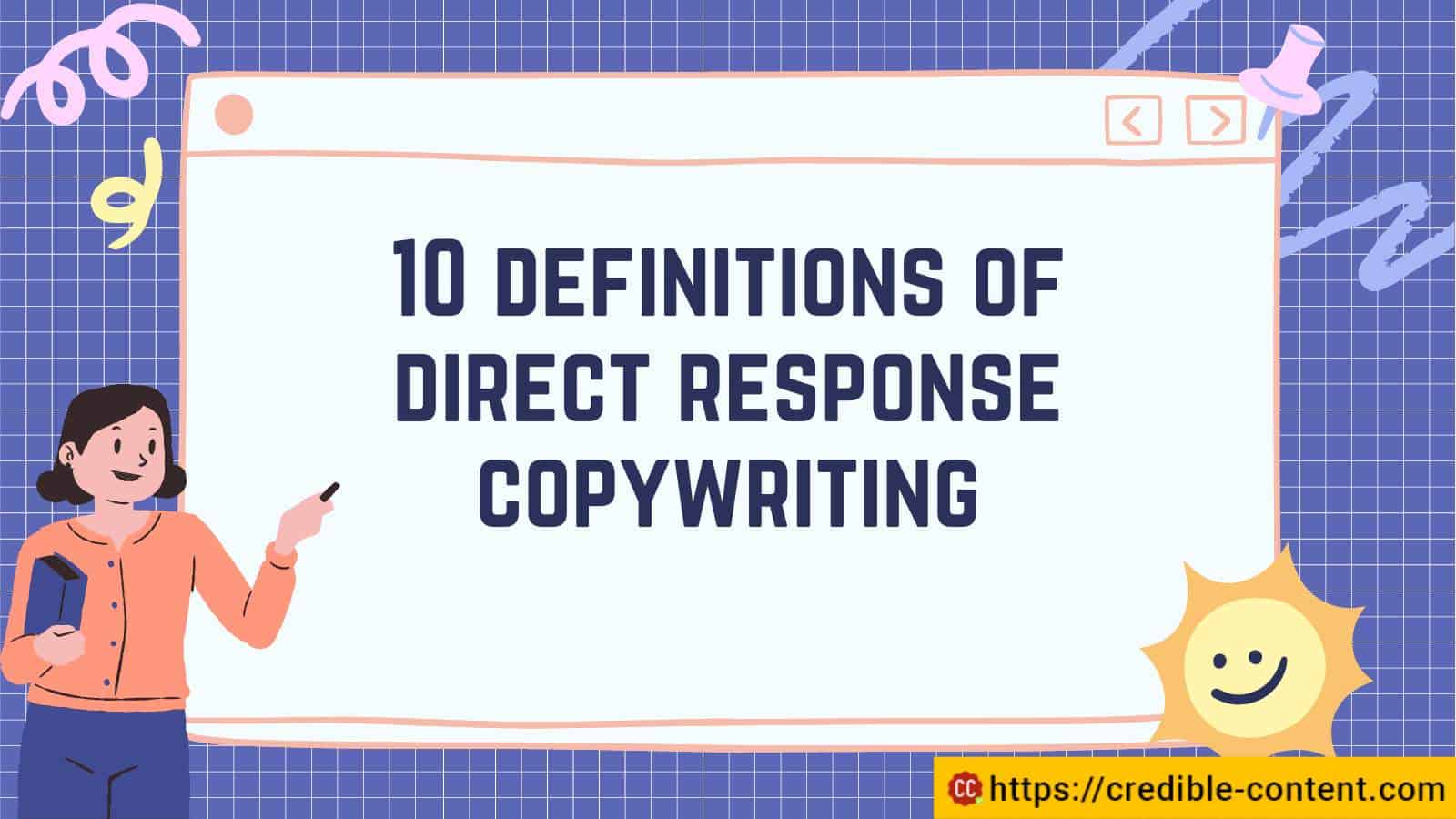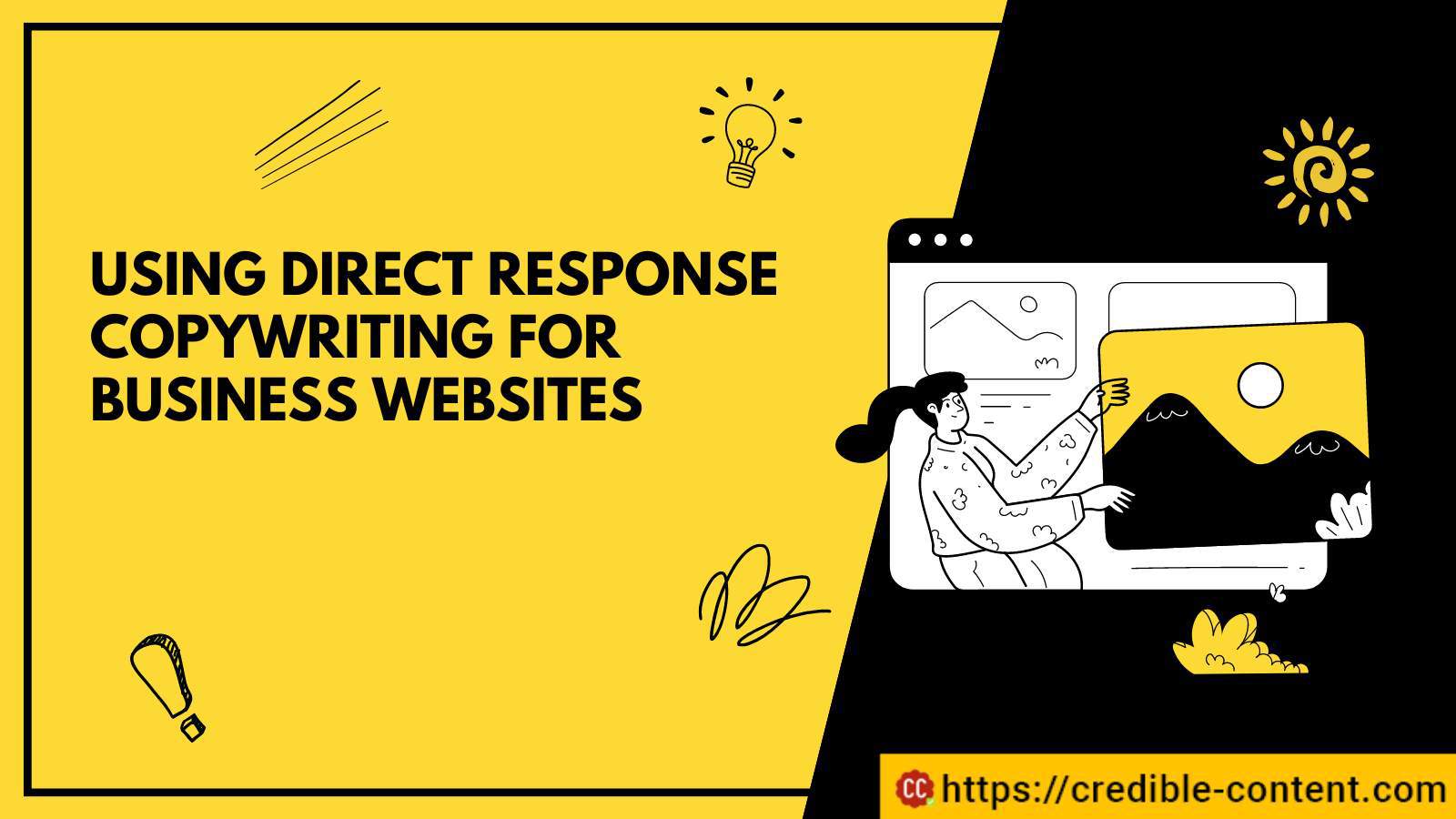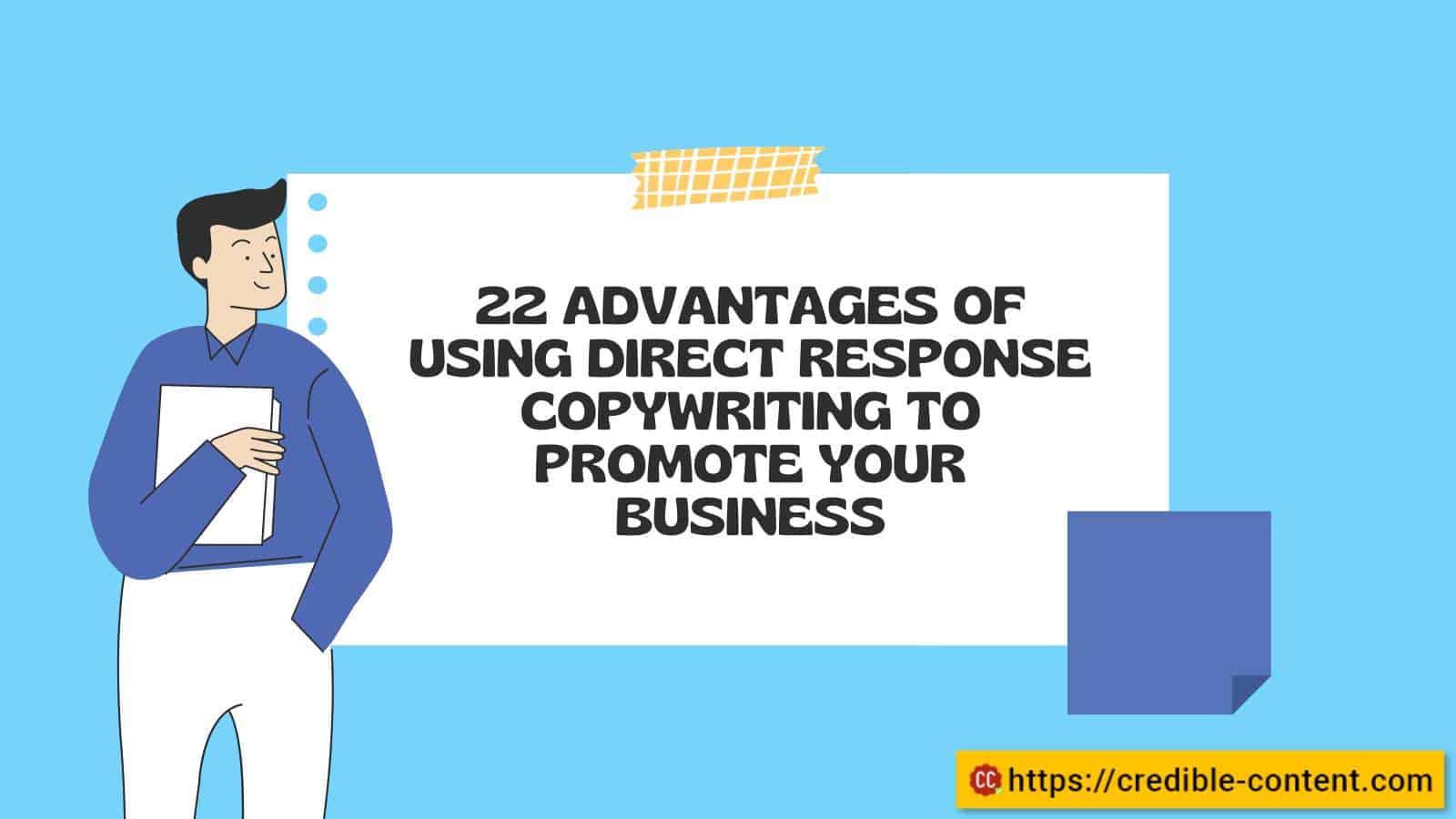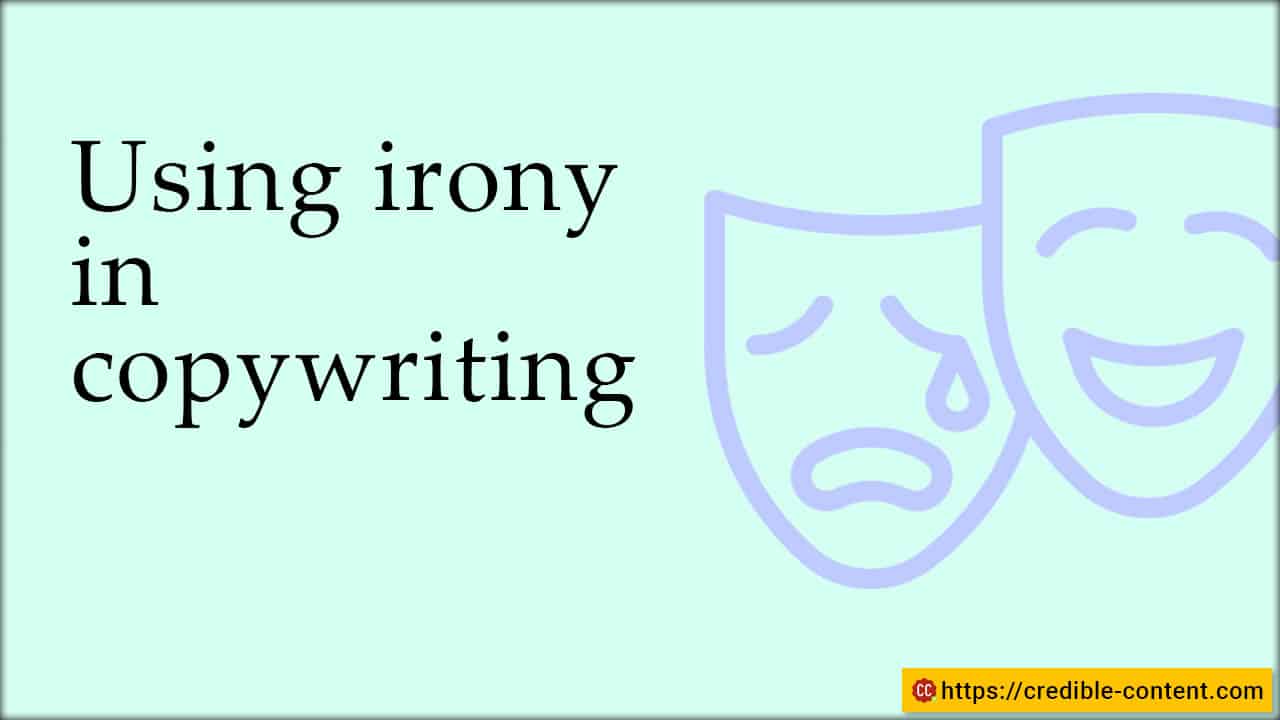
3 copywriting fundamentals
Copywriting is the art and science of writing persuasive text that gets people to take action.
Whether you’re writing a sales page, an email, or a social media post, copywriting is essential for any business that wants to succeed online.
The fundamentals of copywriting are simple, but they can be difficult to master. In this blog post, we’ll walk you through the three key steps to writing effective copy:
- Identify the problem.
- Explain the benefits of solving the problem, or the perils of not solving it.
- Convince the reader how you can solve the problem.
Why is It Important to Understand the Fundamentals of Copywriting?
Understanding the fundamentals of copywriting empowers you to effectively communicate your message, engage your audience, build trust, and create persuasive content across different channels.
It is a valuable skill set that can greatly enhance your marketing efforts and contribute to the success of your business or personal endeavors.
Understanding the fundamentals of copywriting is important for several reasons:
Effective Communication
Copywriting is the art of persuasive writing that aims to communicate a message and elicit a desired response from the reader.
By understanding the fundamentals, such as crafting compelling headlines, structuring content, and using persuasive language, you can effectively communicate your ideas, products, or services to your target audience.
Engaging and Persuasive Content
Copywriting helps you create content that grabs attention and keeps readers engaged.
It teaches you how to structure your writing in a way that captures the reader’s interest from the start and maintains their attention throughout.
By employing persuasive techniques, such as storytelling, emotional appeals, and strong calls-to-action, you can encourage readers to take the desired action, whether it’s making a purchase, subscribing to a newsletter, or sharing your content.
Building Trust and Credibility
Copywriting helps you build trust and credibility with your audience.
When you understand the fundamentals of copywriting, you can create content that addresses your audience’s pain points, provides valuable information, and positions you as an expert or authority in your field.
This helps establish trust, making it more likely that readers will engage with your brand and become loyal customers.
Enhanced Marketing and Advertising
Copywriting plays a crucial role in marketing and advertising.
Whether you’re writing sales pages, social media posts, email campaigns, or advertising copy, understanding the fundamentals of copywriting enables you to craft messages that resonate with your target market.
By using persuasive language, understanding customer motivations, and employing effective storytelling techniques, you can create compelling marketing materials that drive results and increase conversions.
Adaptability and Versatility
Copywriting skills are highly transferable across various mediums and industries.
Whether you’re writing for print, websites, social media, or video scripts, the fundamentals of copywriting remain consistent.
By understanding the core principles, you can adapt your writing style to different platforms, audiences, and formats, ensuring your message is effectively communicated regardless of the medium.
Where Can Use Copywriting Fundamentals?
Here are ten examples of where you can utilize copywriting fundamentals:
- Advertising Campaigns: Print ads, online banners, social media ads, and PPC campaigns.
- Website Landing Pages: Pages designed to convert visitors into leads or customers.
- Email Marketing: Engaging subscribers and driving open rates and click-throughs.
- Sales Pages: Pages dedicated to showcasing and selling products or services.
- Brochures and Flyers: Printed materials used for promotional purposes.
- Social Media Posts: Crafting compelling content for platforms like Facebook, Instagram, Twitter, and LinkedIn.
- Video Scripts: Writing persuasive scripts for promotional or informational videos.
- Press Releases: Creating attention-grabbing press releases for media distribution.
- Product Descriptions: Writing persuasive descriptions for e-commerce websites or catalogs.
- Direct Mail Campaigns: Creating compelling direct mail pieces to attract customers.
Additionally, copywriting fundamentals can be applied to blog posts, whitepapers, case studies, radio and TV commercials, webinars, sales letters, packaging materials, product labels, and more.
Effective copywriting is a versatile skill that can be used in various marketing and communication channels to engage audiences, convey messages, and prompt action.
For What Other Purposes Can Use the Copywriting Fundamentals?
Copywriting fundamentals can be applied in various contexts to create effective and persuasive messages. Here are five examples of where you can utilize copywriting fundamentals:
Advertising Campaigns
Whether it’s print ads, online banners, or social media ads, copywriting fundamentals play a crucial role in crafting compelling headlines, taglines, and ad copy that grab attention, communicate the key message, and prompt people to take action.
Website Landing Pages
Landing pages are designed to convert visitors into leads or customers.
By applying copywriting fundamentals, you can create impactful headlines, persuasive product descriptions, and compelling calls to action that encourage visitors to make a purchase, sign up for a service, or take any desired action.
Email Marketing
In email marketing, effective copywriting is essential to engage subscribers, drive open rates, and inspire click-throughs.
By applying fundamental copywriting techniques such as crafting intriguing subject lines, writing compelling email body content, and using persuasive calls to action, you can increase conversions and achieve your campaign goals.
Sales Pages and Brochures
When creating sales pages or brochures, copywriting fundamentals are essential to communicate the value of a product or service effectively. By using persuasive language, highlighting benefits, and incorporating social proof, you can influence potential customers and drive them to make a purchase or inquiry.
Social Media Posts
Crafting compelling social media posts is crucial to capture attention in a fast-paced and crowded online environment. By applying copywriting techniques like using concise and attention-grabbing headlines, incorporating storytelling, and creating a sense of urgency, you can prompt users to engage, share, or take action on your social media content.
These are just a few examples, but copywriting fundamentals can be applied in various other contexts, including blog posts, video scripts, press releases, and more.
Effective copywriting can significantly impact the success of your communication efforts and prompt people to take the desired action.
Let’s delve deeper into the fundamentals of copywriting.
Copywriting Fundamental #1: Identifying the Problem
When it comes to copywriting, a crucial step is to identify the problem that resonates with your target audience.
By understanding their pain points, challenges, or unmet needs, you can establish a strong connection and demonstrate that you truly comprehend their struggles. Let’s go deeper into this fundamental of copywriting and explore effective strategies to address the problem.
Research and Analyze: Uncovering the Root Causes
To effectively address the problem, conducting thorough research and analysis is essential.
By digging deeper, you can uncover the underlying causes of the issue.
In the case of low search engine rankings, you need to identify the specific factors affecting your website’s visibility and search performance. Consider the following steps:
- Analyze keyword performance: Evaluate the keywords you are targeting and their relevance to your audience. Assess their search volume, competition, and effectiveness in driving organic traffic. Identify any gaps or areas for improvement.
- Review on-page optimization: Examine your website’s on-page elements, such as meta tags, headings, and content structure. Ensure they are optimized with relevant keywords and align with search engine best practices.
- Assess backlink profile: Evaluate the quality and quantity of backlinks pointing to your website. Identify opportunities to acquire high-quality backlinks from authoritative sources within your industry.
Empathize with Your Audience: Putting Yourself in Their Shoes
To create compelling copy, you must develop a deep sense of empathy for your target audience.
Put yourself in their shoes and truly understand their frustrations and challenges regarding low search engine rankings.
This empathetic approach will enable you to tailor your message effectively. Consider these strategies:
- Study customer feedback: Review feedback from customers who have encountered difficulties with low search engine rankings. Look for common pain points, concerns, or issues they have faced. This insight will help you address their specific needs in your copy.
- Conduct interviews or surveys: Engage with your target audience directly through interviews or surveys. Ask open-ended questions about their experiences with search engine rankings and how it impacts their business. This firsthand information will provide valuable insights for your copy.
Highlight the Consequences: Creating a Sense of Urgency
To motivate your audience to take action, it’s important to highlight the consequences of not addressing the problem.
By outlining the potential negative outcomes, you can create a sense of urgency and demonstrate the importance of finding a solution. Consider the following approaches:
- Showcase missed opportunities: Illustrate the potential business opportunities your audience is missing out on due to low search engine rankings. Highlight the revenue, visibility, and growth they could have achieved if their website ranked higher in search results.
- Emphasize competitive disadvantage: Communicate how low search engine rankings can put your audience at a disadvantage compared to their competitors. Highlight the benefits their competitors are gaining by having better visibility and attracting quality leads.
- Present success stories: Share success stories of businesses that successfully improved their search engine rankings and experienced significant growth as a result. Provide tangible examples that showcase the positive impact of addressing the problem.
By implementing these strategies, you can effectively identify the problem, understand your audience’s perspective, and emphasize the consequences of not taking action.
These copywriting fundamentals lay a solid foundation for crafting compelling and persuasive copy that resonates with your target audience.
Remember, the key is to conduct thorough research, tap into empathy, and create a sense of urgency to drive action and help your audience overcome their challenges.
Copywriting Fundamental #2: Explaining the Benefits
Once you have identified the problem and established a connection with your audience, it’s time to explain the benefits of your solution.
Articulating how your product or service can positively impact their lives or businesses is crucial for effective copywriting.
Here are some valuable tips to help you effectively convey the benefits:
Showcase the Value Proposition: Communicate the Unique Value
To persuade your audience, it’s important to clearly communicate the unique value your solution brings.
Your copy should highlight how it addresses their pain points, solves their challenges, or fulfills their desires better than alternative options.
Consider the following strategies:
- Identify key differentiators: Determine what sets your solution apart from competitors. Is it a unique feature, a proprietary technology, or exceptional customer service? Highlight these differentiators to showcase the value you offer.
- Focus on benefits, not just features: While features are important, emphasize the benefits your audience will experience by choosing your solution. How will it make their lives easier, save them time, or enhance their productivity? Clearly articulate these benefits in your copy.
Provide Evidence and Social Proof: Build Trust and Credibility
To establish trust and credibility, it’s essential to back up your claims with evidence and social proof.
This helps alleviate skepticism and builds confidence in your solution. Consider these approaches:
- Utilize data and statistics: Incorporate relevant data and statistics that support the effectiveness of your solution. For example, if your product increases efficiency, provide numbers that demonstrate the percentage of time saved or the increase in productivity.
- Share testimonials and reviews: Testimonials from satisfied customers carry immense weight. Feature testimonials that highlight the positive experiences and outcomes your customers have achieved with your solution. Incorporate direct quotes and specific results whenever possible.
- Showcase case studies and success stories: Present real-world examples of how your solution has solved problems and delivered results. Describe the challenges your customers faced, the steps you took to address them, and the outcomes they experienced. This storytelling approach creates a powerful connection with your audience.
Use Emotional Appeals: Connect on an Emotional Level
Connecting with your audience on an emotional level can significantly impact their decision-making process.
By evoking emotions and painting a vivid picture of the positive outcomes they can achieve, you create a strong desire for your solution. Consider the following techniques:
- Tap into desires and aspirations: Highlight how your solution can fulfill your audience’s desires or aspirations. Will it help them achieve their goals, gain recognition, or improve their quality of life? Craft your copy to evoke a sense of excitement and possibility.
- Address fears and pain points: Identify the fears or pain points your audience may have related to the problem you’re addressing. Show how your solution alleviates these fears and provides relief. By positioning your solution as the answer to their worries, you can create a sense of urgency.
- Use captivating visuals and storytelling: Incorporate captivating visuals and storytelling techniques in your copy. Paint a vivid picture of the positive outcomes your audience can experience. Use engaging narratives that evoke emotions and create a connection with your audience.
By showcasing the unique value of your solution, providing evidence and social proof, and connecting on an emotional level, you can effectively explain the benefits of your offering.
These strategies will help you engage your audience, build trust, and motivate them to take action. Remember, the key is to clearly articulate how your solution positively impacts their lives or businesses and addresses their specific needs and desires.
Copywriting Fundamental #3: Convincing the Reader
The final fundamental of copywriting is all about persuading your reader that your solution is the ultimate answer to their problem.
At this stage, your copy should be convincing, compelling, and action-oriented. Here are some expert techniques to help you achieve this:
Present a Clear Call-to-Action (CTA): Guiding the Next Step
A strong and clear call-to-action (CTA) is essential to prompt your audience to take the desired action. Be direct and specific about what you want them to do. Consider the following strategies:
- Use actionable language: Use verbs that command action and create a sense of urgency. For example, “Buy now,” “Sign up today,” or “Get started.”
- Highlight benefits in the CTA: Incorporate the key benefits or outcomes your audience will achieve by taking action. This reinforces the value of your solution and motivates them to act.
- Create a sense of exclusivity: Make your CTA feel exclusive or limited in some way. For instance, “Limited-time offer,” “Exclusive access,” or “Join our elite community.”
Use Persuasive Language: Captivate and Motivate
To persuade your audience effectively, you must employ powerful and persuasive language throughout your copy. Consider the following techniques:
- Invoke curiosity: Use compelling words or phrases that pique curiosity and entice your audience to learn more. For example, “Discover the secret,” “Unlock the hidden potential,” or “Unveil the mystery.”
- Create excitement: Use enthusiastic and energetic language to convey the excitement and positive emotions associated with your solution. For instance, “Revolutionary,” “Transformative,” or “Life-changing.”
- Evoke a sense of urgency: Communicate the need to take immediate action by using time-sensitive language or limited availability. For example, “Act now,” “Don’t miss out,” or “Limited stock remaining.”
Address Objections: Building Trust and Overcoming Hesitations
To build trust and alleviate any hesitations your audience may have, it’s important to anticipate and address potential objections. Consider the following strategies:
- Provide evidence and testimonials: Share testimonials, reviews, or case studies that highlight the positive experiences of previous customers. This social proof demonstrates the credibility and reliability of your solution.
- Offer guarantees: Provide guarantees or warranties that remove the risk associated with trying your solution. Assure your audience that they have nothing to lose and everything to gain.
- Address common concerns: Identify the common objections or hesitations your audience may have and address them head-on. Use persuasive arguments, facts, or data to counter their concerns and build confidence.
By presenting a clear call-to-action, using persuasive language, and addressing objections, you can convince your readers that your solution is the ultimate answer to their problem.
These techniques will help you create compelling and action-oriented copy that motivates your audience to take the desired action.
Remember, the key is to be direct, persuasive, and address any concerns they may have, ultimately building trust in your solution.
Summing up 15 Fundamentals of Copywriting That Can Be Incorporated into Day-To-Day Writing
- Know your audience: Understand who you are writing for and tailor your message to their needs, preferences, and language.
- Define your objective: Clearly define the purpose of your copy and what action you want the reader to take.
- Grab attention with a compelling headline: Create a captivating headline that instantly grabs the reader’s attention and entices them to keep reading.
- Keep it concise and focused: Write in short sentences and paragraphs to maintain clarity and keep your message focused.
- Use active voice: Write in active voice to make your copy more engaging and impactful.
- Highlight the benefits: Clearly communicate the benefits and value your product or service provides to the reader.
- Tell a story: Incorporate storytelling techniques to make your copy more relatable, memorable, and emotionally resonant.
- Utilize persuasive language: Use powerful and persuasive words to evoke emotions, create urgency, and motivate action.
- Use social proof: Incorporate testimonials, reviews, case studies, or endorsements to build trust and credibility with your audience.
- Address objections: Anticipate and address potential objections or concerns your audience may have, providing reassurance and convincing arguments.
- Create a sense of urgency: Encourage immediate action by using time-limited offers, limited availability, or exclusive deals.
- Incorporate visuals: Use high-quality images, infographics, or videos to enhance your copy and engage the reader visually.
- Craft a strong call-to-action (CTA): Clearly guide the reader on what action they should take next, using persuasive and action-oriented language.
- Edit and revise: Proofread your copy multiple times, ensuring it is error-free, concise, and impactful.
- Test and iterate: Continuously test different versions of your copy, analyze the results, and make improvements based on data and feedback.
By incorporating these 15 fundamentals into your day-to-day writing, you can enhance the effectiveness and persuasiveness of your copy, whether you’re writing emails, blog posts, social media updates, or any other form of communication.
How to Use Copywriting Fundamentals in Making Day-To-Day Email Communication Effective?
Using copywriting fundamentals in day-to-day email communication can significantly enhance the effectiveness and impact of your messages.
Here’s how you can apply the copywriting fundamentals to make your emails more persuasive and engaging:
Know your audience
Understand the recipients of your emails, their preferences, and their needs. Tailor your email content to resonate with their interests and language style.
Define your objective
Clearly define the purpose of your email.
Determine the desired action you want the recipient to take after reading your message, such as replying, scheduling a meeting, or making a purchase.
Grab attention with a compelling subject line
Craft a subject line that grabs the reader’s attention and entices them to open your email.
Use intriguing, curiosity-inducing, or benefit-oriented language to pique their interest.
Keep it concise and focused
Write short, to-the-point sentences and paragraphs to maintain clarity and make your message easy to digest.
Busy professionals appreciate concise emails that quickly convey the main points.
Use active voice
Write in active voice to make your email more engaging and direct. Active voice ensures your message is clear and facilitates better comprehension.
Highlight the benefits
Clearly communicate the benefits or value proposition of your email.
Explain how your recipient will benefit or solve a problem by taking the desired action.
Utilize persuasive language
Use persuasive words and phrases to create excitement and motivate action.
Appeal to emotions and highlight the positive outcomes or advantages the recipient will experience.
Use personalization
Address the recipient by their name and customize the email content to make it relevant to their specific situation or needs.
Personalization shows that you value their individuality.
Include social proof
Incorporate relevant testimonials, success stories, or endorsements to build credibility and trust.
When appropriate, mention how your solution has benefited others in similar situations.
Craft a compelling call-to-action (CTA)
Clearly state the action you want the recipient to take, such as replying, clicking a link, or scheduling a call. Make the CTA prominent and use persuasive language to encourage action.
Edit and revise
Proofread your email for grammar and spelling errors. Ensure your message is concise, clear, and free of unnecessary jargon.
Edit for clarity and readability.
Test different email versions
Conduct A/B testing with different subject lines, email formats, or CTAs to gauge their effectiveness.
Analyze open rates, response rates, and click-through rates to optimize your email copy.
Follow up strategically
If you don’t receive a response, follow up with a well-crafted and polite email.
Use persuasion techniques and reminders to increase the chances of getting a reply.
Be authentic and genuine
Maintain a friendly and approachable tone in your email.
Be sincere, empathetic, and demonstrate that you genuinely care about the recipient’s needs.
Analyze and learn:
Track the performance of your email campaigns and analyze the data. Identify patterns, learn from successful emails, and make adjustments to improve future email communications.
By applying these copywriting fundamentals to your day-to-day email communication, you can enhance engagement, increase response rates, and achieve your desired outcomes more effectively.
Benefits of Mastering the Copywriting Fundamentals
Listed below are the unique benefits of mastering the fundamentals of copywriting.
Benefits of Mastering the Fundamentals of Copywriting
Enhanced Persuasive Writing Skills
- Develop strong persuasive writing skills that engage and motivate readers.
- Craft compelling copy using active voice and impactful language.
Increased Conversion Rates
- Create persuasive content that drives higher conversion rates.
- Utilize compelling headlines, persuasive copy, and strong call-to-actions (CTAs).
Effective Communication
- Communicate ideas clearly and concisely to target audiences.
- Master copywriting fundamentals for effective message delivery.
Building Trust and Credibility
- Build trust and credibility through well-crafted copy.
- Establish authority and expertise, fostering trust among readers.
Improved Branding
- Create consistent and compelling brand messaging.
- Convey brand values, personality, and unique selling propositions effectively.
Better SEO Optimization
- Integrate relevant keywords naturally into content for improved SEO.
- Enhance website visibility, attract organic traffic, and improve search engine rankings.
Effective Content Marketing
- Develop engaging and shareable content for successful content marketing.
- Attract, educate, and convert target audiences through compelling copy.
Enhanced Communication with Customers
- Understand customer pain points, motivations, and desires.
- Create targeted copy that resonates with customers, leading to increased engagement and satisfaction.
Increased Sales and Revenue
- Utilize effective copywriting techniques to boost sales and revenue.
- Drive conversions and persuade customers to take action.
Versatility in Writing
- Gain versatile writing skills applicable across various industries.
- Adapt copywriting skills to marketing agencies, advertising firms, e-commerce companies, and more.
Time and Cost Efficiency
- Craft copy efficiently with a focus on clear communication.
- Save time and resources by delivering impactful messages effectively.
Competitive Edge
- Stand out from competitors with well-crafted copy.
- Differentiate your brand and connect with customers on a deeper level.
Adaptability to Various Platforms
- Master copywriting fundamentals for different platforms (website, social media, email marketing, etc.).
- Tailor messages to specific platforms, maximizing their effectiveness.
Stronger Customer Relationships
- Engage customers through compelling copy, fostering stronger relationships.
- Create a loyal customer base through effective communication.
Improved Targeting and Segmentation
- Understand target audience demographics, preferences, and behaviors.
- Tailor copy to specific segments, increasing relevance and resonance.
Persuasive Presentations and Pitches
- Apply copywriting techniques to create persuasive presentations and pitches.
- Influence and captivate audiences with impactful messages.
Effective Storytelling
- Master the art of storytelling to connect emotionally with readers.
- Create compelling narratives that engage and resonate.
Career Advancement Opportunities
- Unlock career opportunities in marketing, advertising, and communications.
- Demonstrate expertise in copywriting for professional growth.
Increased Engagement and Shares
- Create copy that sparks engagement and encourages social sharing.
- Develop content that resonates with readers, driving organic reach.
Personal Brand Development
- Apply copywriting skills to build and enhance your personal brand.
- Craft compelling personal narratives and messages to showcase expertise.
These benefits highlight the value of mastering copywriting fundamentals in various professional contexts, demonstrating its impact on communication, persuasion, and business success.
Mastering the fundamentals of copywriting is of paramount importance for business growth.
Effective copy has the power to engage, persuade, and ultimately drive customers to take action.
By understanding and applying copywriting techniques, businesses can create compelling content that resonates with their target audience, enhances brand awareness, and boosts conversion rates.
Well-crafted copy builds trust and credibility, establishing a strong brand identity and fostering customer loyalty.
Moreover, mastering copywriting fundamentals enables businesses to optimize their communication across various platforms and channels, ensuring consistent and impactful messaging.
Whether it’s crafting persuasive sales pages, engaging social media posts, or compelling email campaigns, the ability to create powerful copy is a valuable asset that can propel business growth and set it apart from competitors.
By mastering copywriting fundamentals, businesses can effectively communicate their unique value proposition, attract new customers, and ultimately drive revenue and success.
Start mastering the fundamentals of copywriting today.


